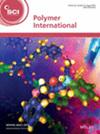求助PDF
{"title":"玻璃化水凝胶玻璃化转变的结合流变模型","authors":"Ziyu Xing","doi":"10.1002/pi.6768","DOIUrl":null,"url":null,"abstract":"<p>The essential nature of the bound and confined non-covalent interactions in the condensed state and the glass transition of hydrogels has not been fully clarified. At present, the physical principles underlying the formation of glassy hydrogels with high water content (>50 wt%) at ambient conditions and room temperature to achieve superior mechanical properties are still a subject of active research and debate. The complexity of the bound and confined interactions between polymer chains and water poses significant challenges in unraveling the operational mechanisms behind glassy hydrogels. In this study, by combining non-random lattice theory and free volume theory, an associative rheological model is developed to investigate the thermodynamic and viscoelastic behavior of glassy hydrogels undergoing bound and confined interactions. Drawing upon the principles of rheology, the mechanism for the formation of glassy hydrogels at room temperature is described by spring and dashpot elements, where each mechanical element corresponds to a specific molecular mechanism. The nonlinear behavior of rheology is accurately captured by the lattice structure engaged in these interactions. Our proposed model facilitates a transition between the Maxwell and Voigt models, thereby enabling a comprehensive analysis of key viscoelastic parameters such as storage modulus (<i>E′</i>), loss modulus (<i>E″</i>), loss factor (tan <i>δ</i> = <i>E″</i>/<i>E′</i>) and the observed glass transition phenomena in glassy hydrogels. Finally, the effectiveness of the proposed associative rheological models is verified using the experimental results reported in the literature, offering a principal understanding of the exceptional mechanical properties of glassy hydrogels governed by bound and confined interactions. © 2025 Society of Chemical Industry.</p>","PeriodicalId":20404,"journal":{"name":"Polymer International","volume":"74 8","pages":"727-738"},"PeriodicalIF":3.6000,"publicationDate":"2025-04-17","publicationTypes":"Journal Article","fieldsOfStudy":null,"isOpenAccess":false,"openAccessPdf":"","citationCount":"0","resultStr":"{\"title\":\"An associative rheological model for the glass transition of glassy hydrogels undergoing bound and confined interactions\",\"authors\":\"Ziyu Xing\",\"doi\":\"10.1002/pi.6768\",\"DOIUrl\":null,\"url\":null,\"abstract\":\"<p>The essential nature of the bound and confined non-covalent interactions in the condensed state and the glass transition of hydrogels has not been fully clarified. At present, the physical principles underlying the formation of glassy hydrogels with high water content (>50 wt%) at ambient conditions and room temperature to achieve superior mechanical properties are still a subject of active research and debate. The complexity of the bound and confined interactions between polymer chains and water poses significant challenges in unraveling the operational mechanisms behind glassy hydrogels. In this study, by combining non-random lattice theory and free volume theory, an associative rheological model is developed to investigate the thermodynamic and viscoelastic behavior of glassy hydrogels undergoing bound and confined interactions. Drawing upon the principles of rheology, the mechanism for the formation of glassy hydrogels at room temperature is described by spring and dashpot elements, where each mechanical element corresponds to a specific molecular mechanism. The nonlinear behavior of rheology is accurately captured by the lattice structure engaged in these interactions. Our proposed model facilitates a transition between the Maxwell and Voigt models, thereby enabling a comprehensive analysis of key viscoelastic parameters such as storage modulus (<i>E′</i>), loss modulus (<i>E″</i>), loss factor (tan <i>δ</i> = <i>E″</i>/<i>E′</i>) and the observed glass transition phenomena in glassy hydrogels. Finally, the effectiveness of the proposed associative rheological models is verified using the experimental results reported in the literature, offering a principal understanding of the exceptional mechanical properties of glassy hydrogels governed by bound and confined interactions. © 2025 Society of Chemical Industry.</p>\",\"PeriodicalId\":20404,\"journal\":{\"name\":\"Polymer International\",\"volume\":\"74 8\",\"pages\":\"727-738\"},\"PeriodicalIF\":3.6000,\"publicationDate\":\"2025-04-17\",\"publicationTypes\":\"Journal Article\",\"fieldsOfStudy\":null,\"isOpenAccess\":false,\"openAccessPdf\":\"\",\"citationCount\":\"0\",\"resultStr\":null,\"platform\":\"Semanticscholar\",\"paperid\":null,\"PeriodicalName\":\"Polymer International\",\"FirstCategoryId\":\"92\",\"ListUrlMain\":\"https://scijournals.onlinelibrary.wiley.com/doi/10.1002/pi.6768\",\"RegionNum\":4,\"RegionCategory\":\"化学\",\"ArticlePicture\":[],\"TitleCN\":null,\"AbstractTextCN\":null,\"PMCID\":null,\"EPubDate\":\"\",\"PubModel\":\"\",\"JCR\":\"Q2\",\"JCRName\":\"POLYMER SCIENCE\",\"Score\":null,\"Total\":0}","platform":"Semanticscholar","paperid":null,"PeriodicalName":"Polymer International","FirstCategoryId":"92","ListUrlMain":"https://scijournals.onlinelibrary.wiley.com/doi/10.1002/pi.6768","RegionNum":4,"RegionCategory":"化学","ArticlePicture":[],"TitleCN":null,"AbstractTextCN":null,"PMCID":null,"EPubDate":"","PubModel":"","JCR":"Q2","JCRName":"POLYMER SCIENCE","Score":null,"Total":0}
引用次数: 0
引用
批量引用




 求助内容:
求助内容: 应助结果提醒方式:
应助结果提醒方式:


